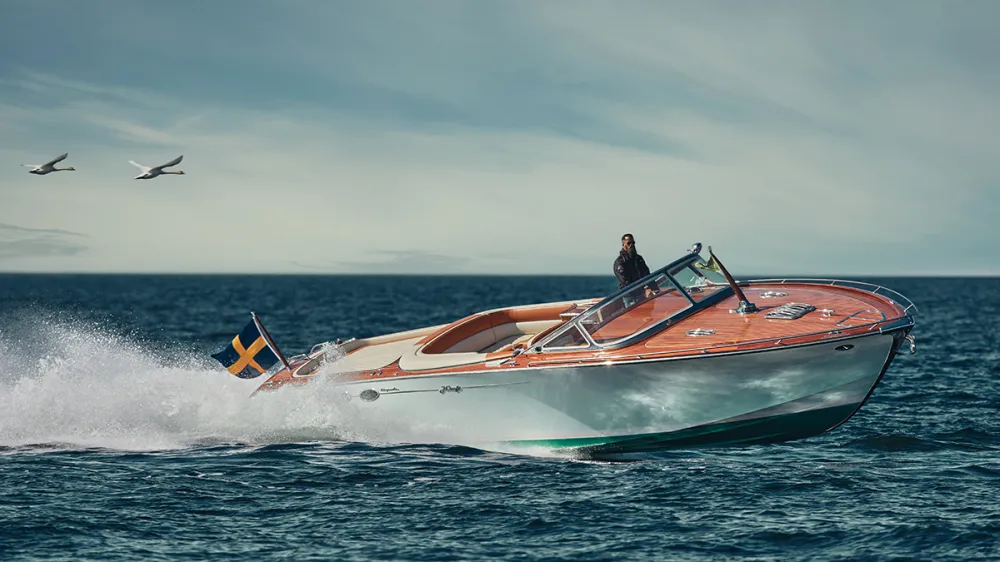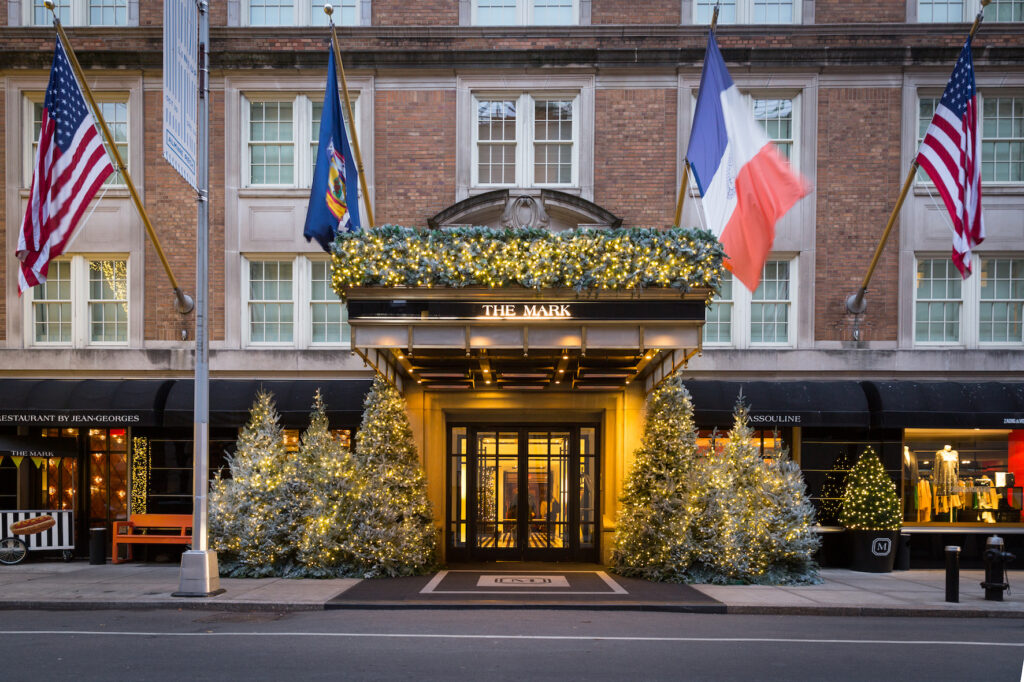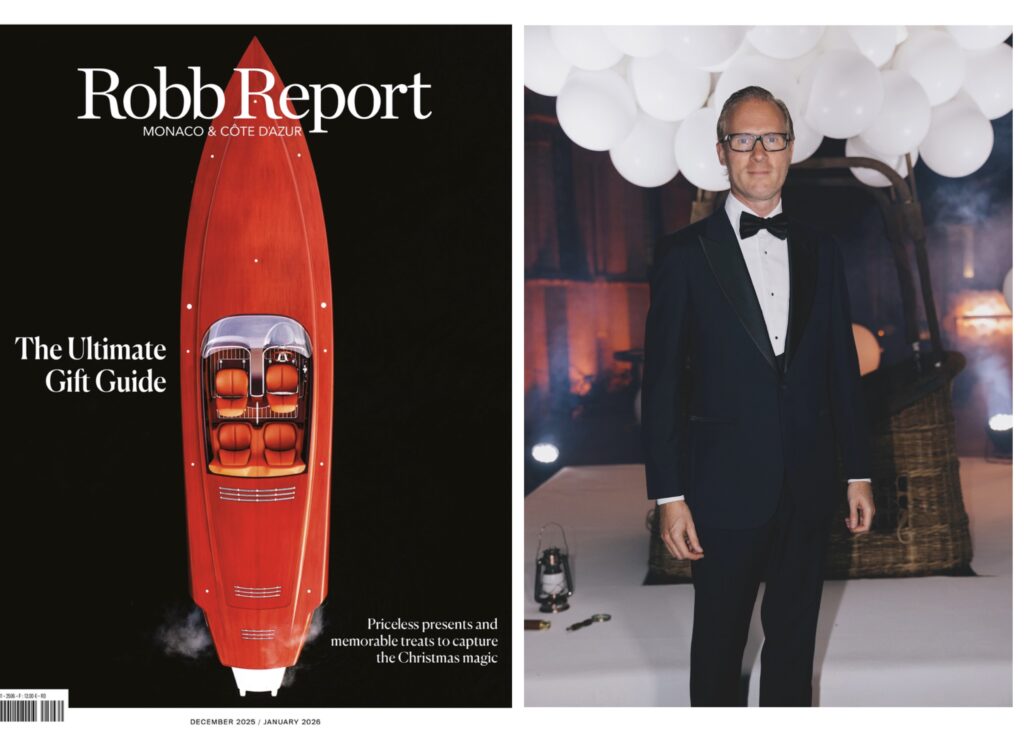On a remote Swedish island where Norse shipyards once thrived, the boutique outfit builds 42-foot vessels with nostalgia.
Viking grit still runs strong throughout Gotland. From medieval sailors buried beneath the cobblestone streets in Visby to the ruins of Norse shipyards where longboats were built 1,000 years ago, ancient maritime lore suffuses the island. The old walled community once thrived trading squirrel skins and beeswax, and to this day small fishing vessels make regular runs between the isle and the mainland, a distance of about 56 miles.
“The people of Gotland have always made their living by the sea,” says Johan Hallén, who grew up here, renovated his first boat at the age of 15, served in the Swedish navy as a mine diver, and later spent three years as a training officer specializing in battleship management. These days, Hallén is the chief technical officer—and the longest-serving employee—at J Craft, an unlikely boutique yard that sends the lion’s share of its meticulously crafted 42-foot Torpedo models to the French Riviera.
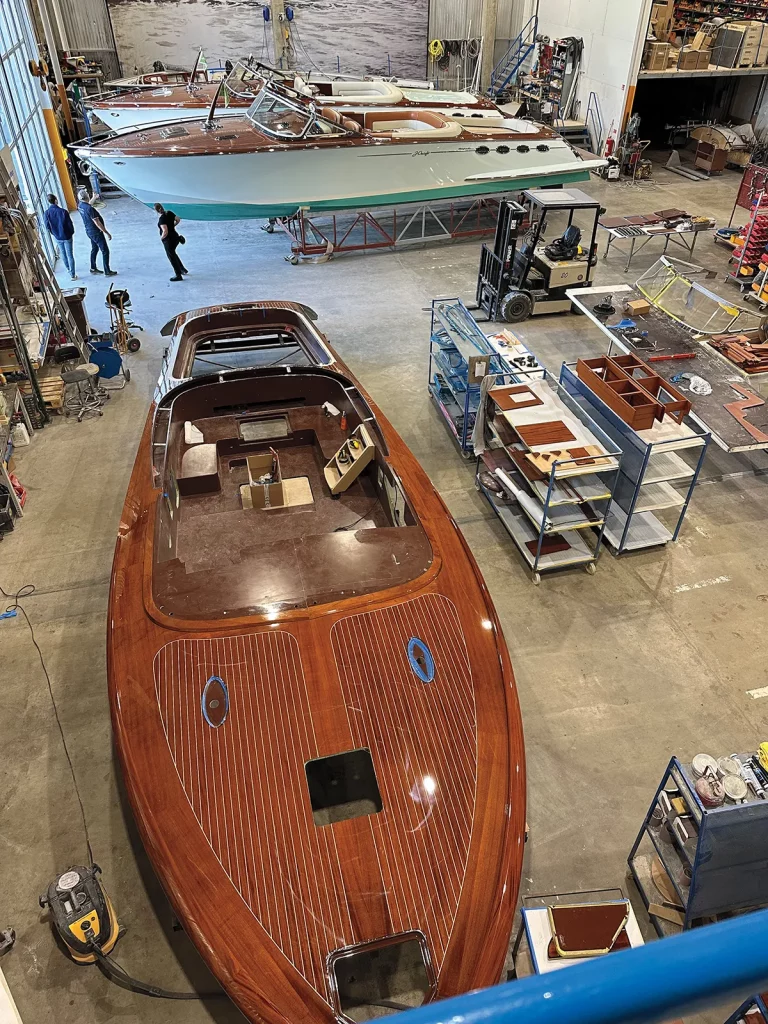
COURTESY OF J CRAFT
Björn Jansson founded J Craft in 1999, intent on building a stunning yacht inspired by the gleaming Riva Aquaramas of the 1960s. His vision was to create boats with finely varnished mahogany topsides but far more seaworthy fiberglass hulls, making them capable of running the rough waters of the surrounding Baltic. In 2000, Jansson, Hallén, and a handful of other local craftsmen and carpenters delivered the first J Craft, a 38-foot Cabrio Cruiser named Polaris, to its inaugural customer: King Carl XVI Gustaf of Sweden.
Only 29 boats have emerged from the yard—a hallmark of its select build ethos. Some notable examples include Bourik, tender to 512-foot Dilbar, and Tonic Express, tender to 131-foot Pink Gin, but most are weekend cruisers for owners around the world. Each project requires 9,000 hours of labor, 20 layers of varnish on hundreds of board feet of West African mahogany, and the 223 years of combined experience represented by the yard’s 12 workers.
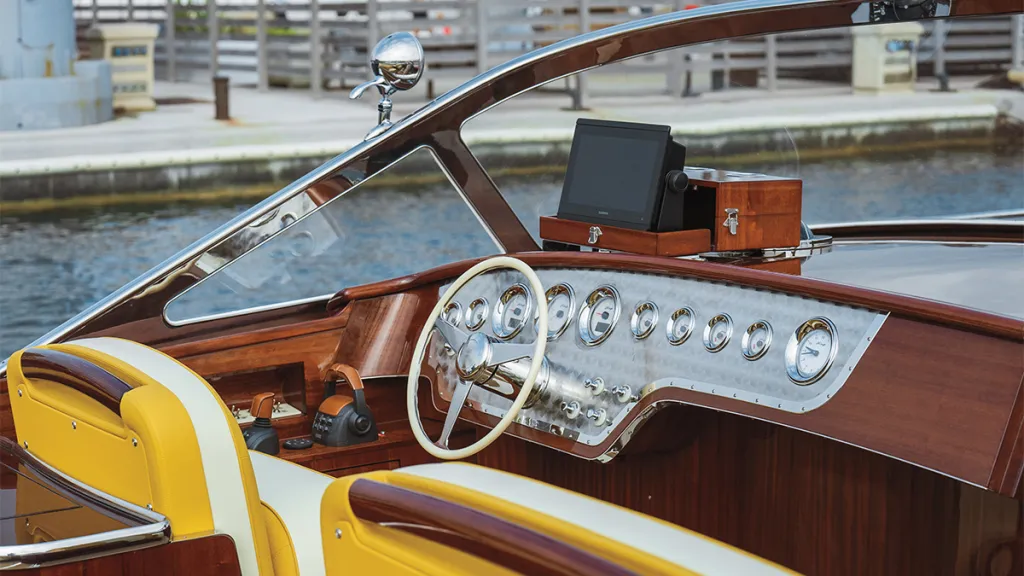
COURTESY OF J CRAFT
Seen from the street, the facility resembles an unassuming auto-repair shop, revealing nothing of the artisanship it houses. Inside, the aromas of varnish and fresh-cut wood are ever present, but there’s no overpowering stench of resin or the sounds of heavy machinery. Destined for the U.S., Torpedo hull No. 22 sits in the workshop with wiring exposed while its deck rests 30 feet away, surrounded by a team sanding the mahogany with 800-grit paper. Then there’s the completed Zens, here for overwintering—a visual bookend to the process with its polished turquoise hull at full gleam.
Long, uncut boards of mahogany, teak, and spruce are stacked in one section of the 25,000-square-foot building, a space that also includes the paint booth and a fiberglass department with enough preprepared composites for a pair of new hulls. In 2008, J Craft adopted vacuum infusion, a cleaner, more precise way of introducing recyclable resin to fiberglass for the curved hulls, which “speeds up the process and allows for fast changes,” according to Hallén.
But many old-world techniques are still employed. Take the mahogany strips that will comprise the foredeck: These are curved by steam, a practice that also dates back to the Vikings. The devotion to the craft hasn’t changed since Jansson and Hallén started the operation, but the implementation of next-generation design and engineering certainly has—at least since hedge-fund manager Radenko Milakovic bought the yard in 2008. “I see myself as its custodian,” says Milakovic, who fell in love with J Craft after chartering one of its models in the Med. “That means safeguarding its spirit while making significant technical advances.”
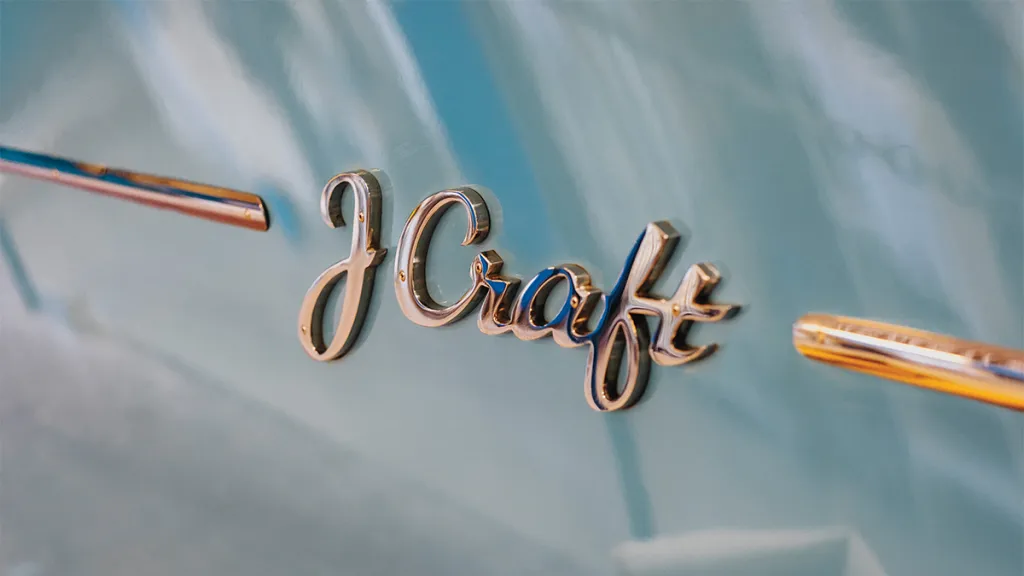
COURTESY OF J CRAFT
Milakovic shelved the Cabrio Cruiser and launched the first Torpedo, La Decadence, in 2009, swapping out the twin Yanmar configuration for twin Volvo Penta IPS 650-RS engines, a rudderless IPS pod system, and joystick controls. The team worked with Volvo’s naval architects, redesigning the Torpedo’s hull to improve seakeeping and performance. With the new propulsion setup, top speed jumped 20 percent, to 47 knots, while fuel consumption was lowered by 30 percent; the boat now has roughly 280 nautical miles of range at 30 knots.
Striving for a more ’60s Italian aesthetic, Milakovic also addressed the cockpit, mandating classic-automobile features to embellish the already vintage styling. An analog dashboard, a left-hand-drive position, and even a Nardi steering wheel—originally designed for Ferrari’s 250 GTO—impart the desired effect. “The team learned a lot from the Cabrios, but the Torpedo brought real evolution,” he says, adding that the latter is “reminiscent of a ’57 Corvette but has the endurance to cover long distances—say, Miami to the Bahamas and back.”
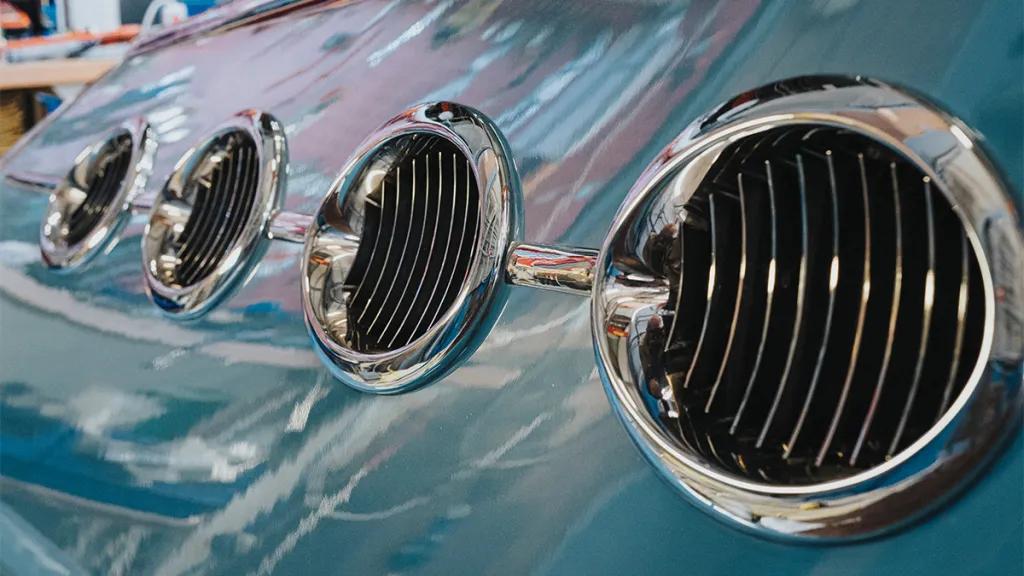
COURTESY OF J CRAFT
Starting at around $1.75 million, each Torpedo features customization that goes far beyond the selection of (often vibrant) hull colors to include items such as matching luggage, a teppanyaki grill, a 2,000-watt sound system, a Z-box humidor, and a sterling-silver picnic set; a request for a Gatling gun on the bow was politely declined. The two-stateroom interior is dressed in the same mahogany as the cockpit, often personalized with Hermès or Loro Piana fabrics or a favored leather. “The throne”—an elaborate mahogany commode—doubles as a shower seat in the head.
During a lively, cold, and quite wet sea trial on the Baltic, the offshore prowess of Zens was amply demonstrated via the combination of its seaworthy hull and master builder Zoltan Antunovic as pilot. After Zens was exercised through eight-foot seas, more genteel conditions were enjoyed behind the harbor seawall, finessing pirouettes in the calm water with the joystick before the boat glided nimbly to the dock. As for the ideal customer, that may be a surprisingly wide target: It’s easy to imagine Leif Erikson and Federico Fellini fighting for a turn at the helm.

